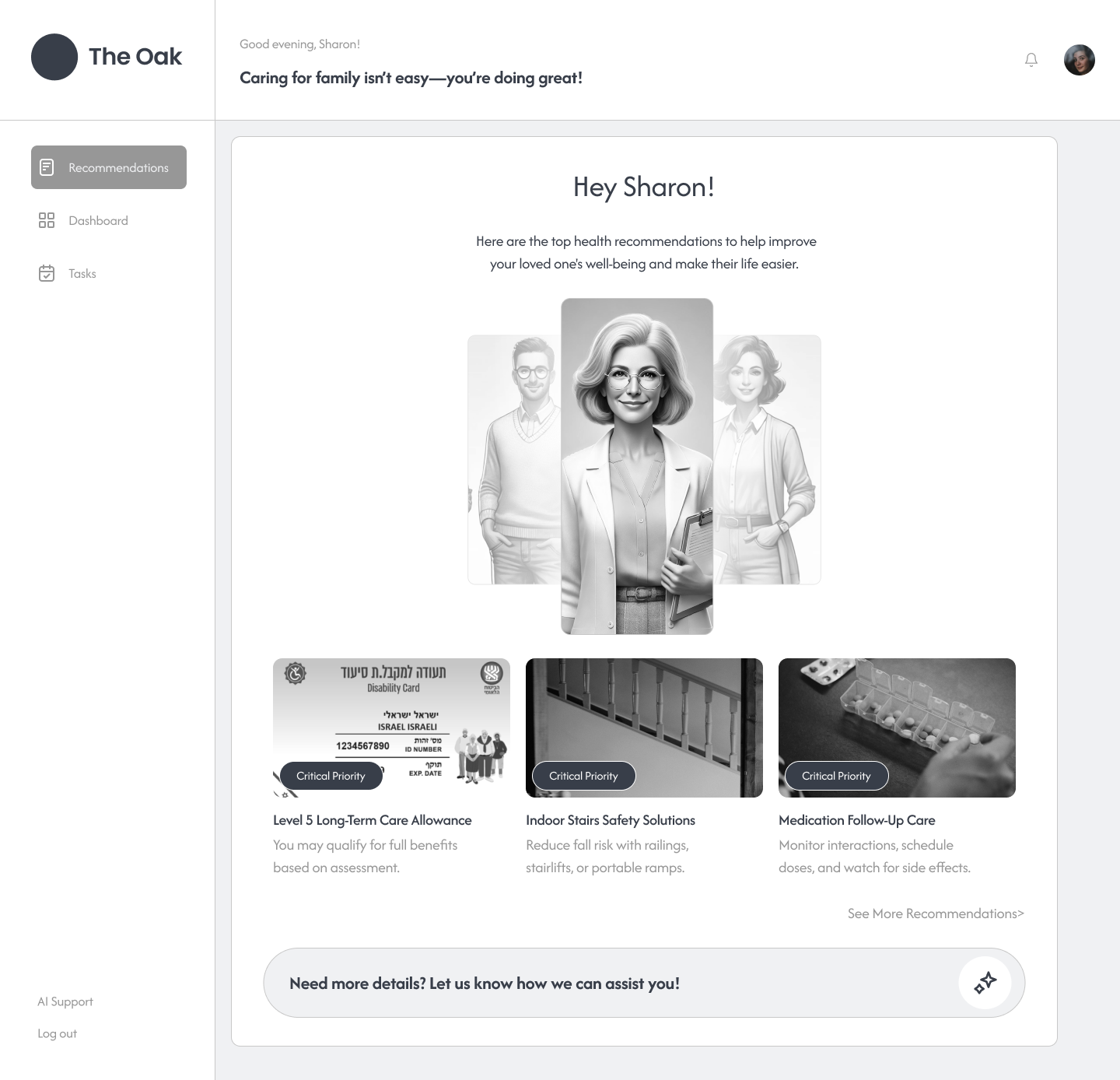
The Oak
The Oak is a conceptual project created as part of a UX course. It’s a digital platform designed to support family members caring for aging parents. I led the research, defined user needs, created AI-powered personas, and designed key interfaces-including an onboarding questionnaire, personalized medical recommendations, and a task management system.
Client: Or Harel
Supporting Care.
Empowering Families
(1) "I’m caring for my parent, but I don’t know where to start."
The Overwhelmed Primary Caregiver
Emotionally involved daughter, unsure where to start and in need of structure, clarity, and medical guidance.
(2) "I’m doing everything alone-it feels like no one’s helping."
The Isolated Sibling
Responsible but unsupported family member, seeking tools to coordinate care and share the burden with others.
(1) Emotional Strain
Frustration: Caregivers feel lost and unsupported in critical moments
Risk: Low engagement and drop-off during onboarding or decision-making
(2) Family Burden
Frustration: One family member carries the full burden alone
Risk: Reduced long-term retention due to burnout and frustration
(3) Task Overload
Frustration: Complex tasks and information feel overwhelming to manage
Risk: Underuse of features and decreased trust in the platform
- 80% of elder care is provided by family
The Oak supports caregivers with clear structure, easing the burden of untrained, unpaid care. - 7–22% of elder hospitalizations are preventable Centralized Search Focus
The Oak doesn’t replace medical infrastructure-but by offering reminders and structured guidance, it helps families take earlier, informed action at home. - Readmission policies cost hospitals billions
The Oak supports families-not hospitals-but by empowering proactive care, it may indirectly reduce unnecessary returns to emergency care.
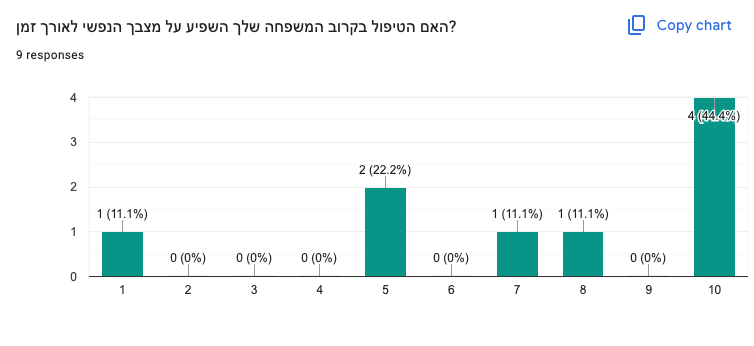
One of the key UX decisions was to structure the onboarding flow around three core caregiving dimensions: administrative and bureaucratic needs, medical status, and the patient’s overall well-being and living environment.
Instead of overwhelming users with dense content, I designed a conversational interface inspired by chat apps—creating a more human, guided experience that adapts to the user's mindset and role. This interaction model helps users feel supported from the very first step.
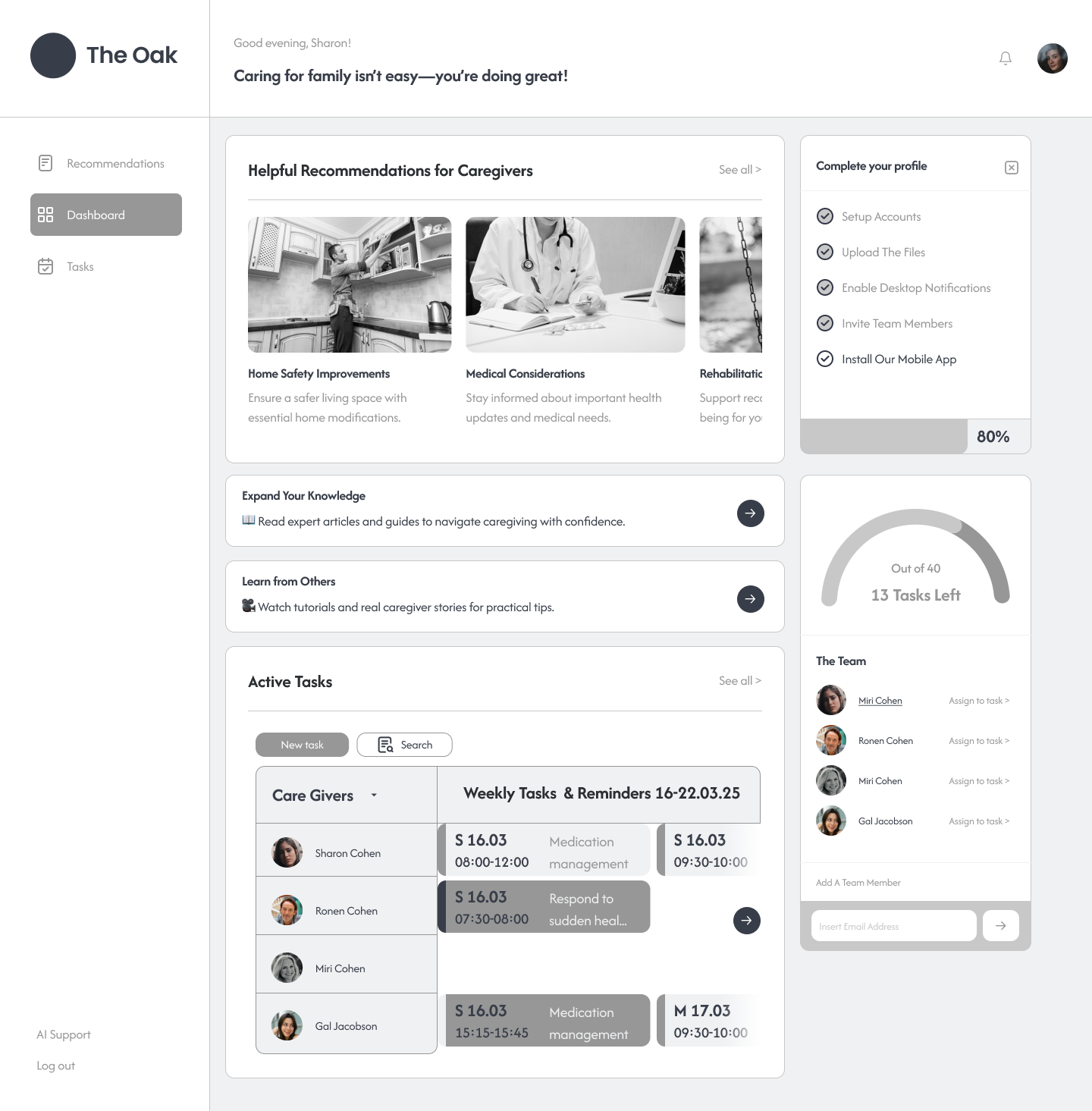
The onboarding was redesigned into a step-by-step flow with digestible parts, guidance, and automated form-filling to reduce overload. The mobile app helps caregivers easily manage the patient’s schedule on the go, while the desktop offers detailed management and analysis—together ensuring seamless, efficient care.
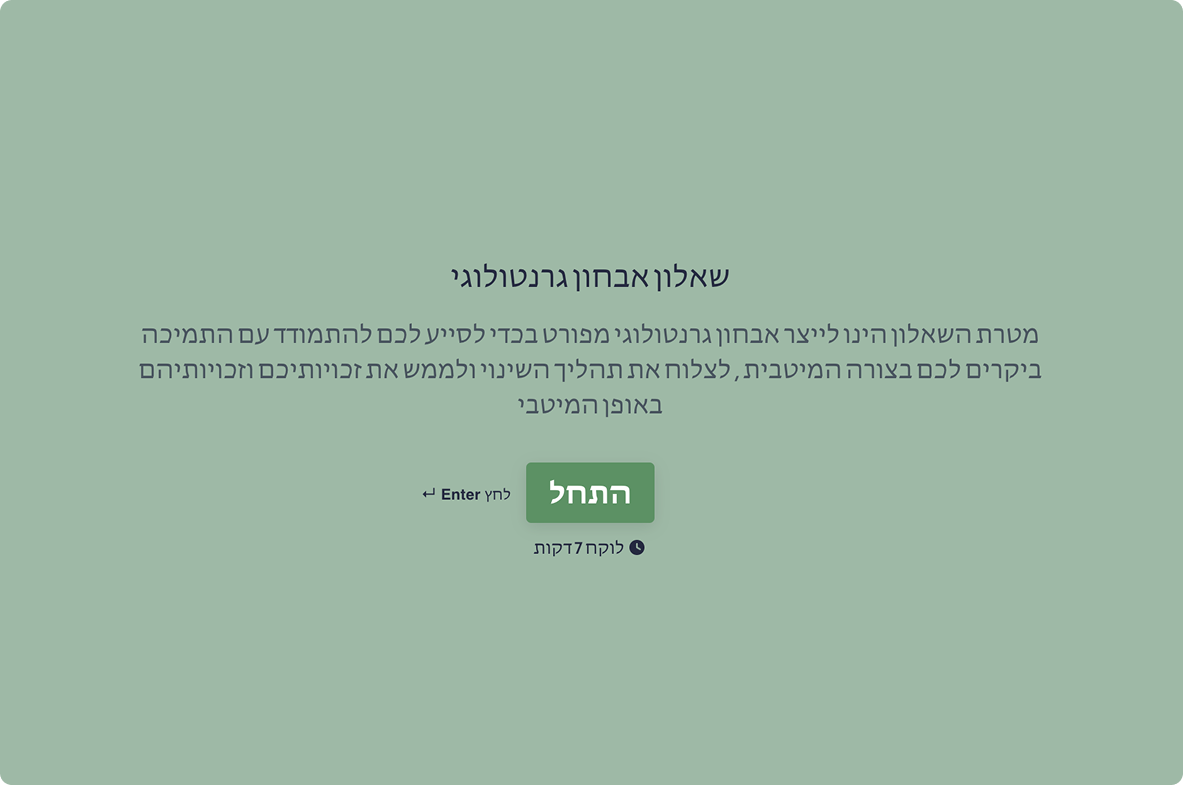
Before: A long, overwhelming Google Forms–style questionnaire, with no sense of progress or flow.
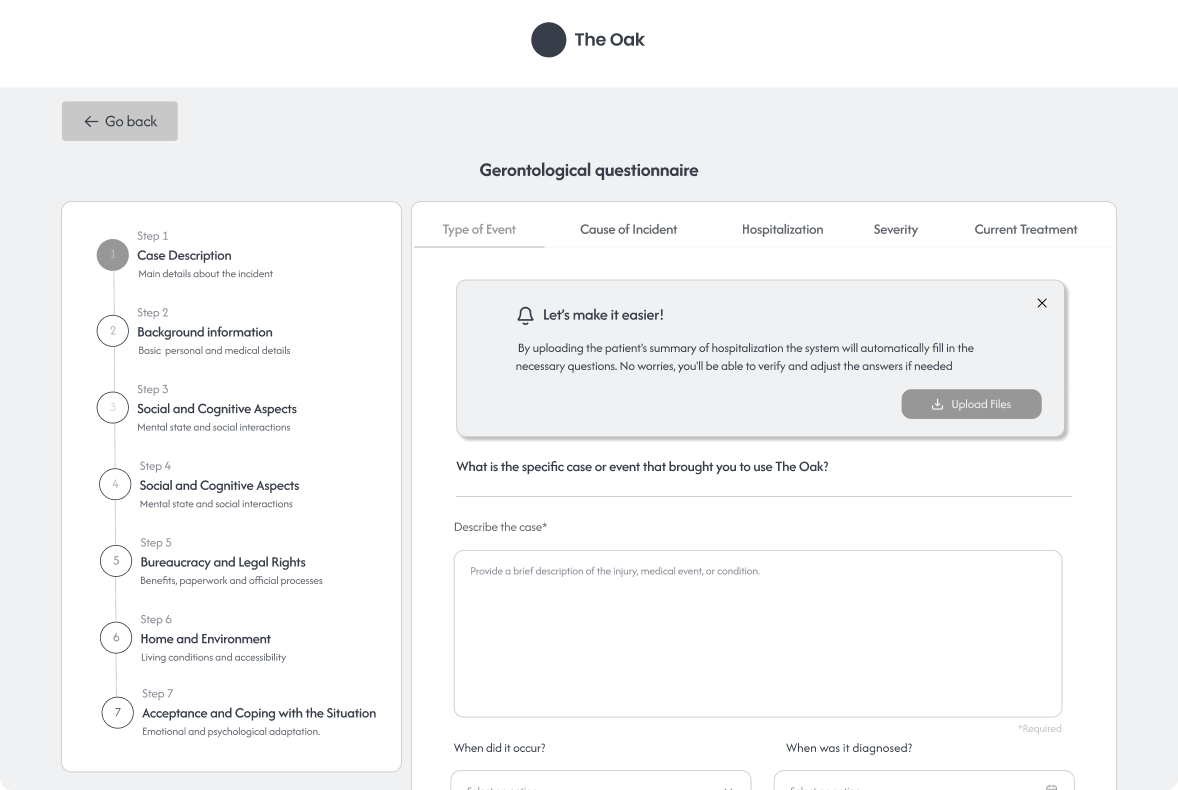
After: A friendly, guided interface with clear navigation, showing users where they are, what’s left, and ensuring information is entered intuitively—just once.
- AI-Driven Recommendations:
Provided tailored tips sorted by urgency and topic. - Visual Prioritization:
Improved side menu hierarchy and smoother tab transitions. - Shared Responsibilities:
Designed a multi-user task board to reflect real family dynamics. - Drag & Drop Simplicity:
Enabled intuitive scheduling and reassignment of tasks. - Friendly Tone:
Used positive, reassuring copy to reduce emotional stress.
Even though The Oak is a conceptual project, the design process led to several key outcomes:
- Clarity Overload → Clarity
Reduced the cognitive load of caregiving tasks by transforming long forms into a guided, user-friendly journey. - From Reactive to Proactive
Designed tools to help caregivers anticipate needs with personalized recommendations and smart reminders.
How success could be measured:
Enhanced Care Engagement
Higher onboarding completion, better family collaboration through shared tasks, and increased user confidence in making complex care decisions. Behavioral signals, such as faster responses to reminders and repeated interaction with personalized tips, further indicate trust, usability, and value.
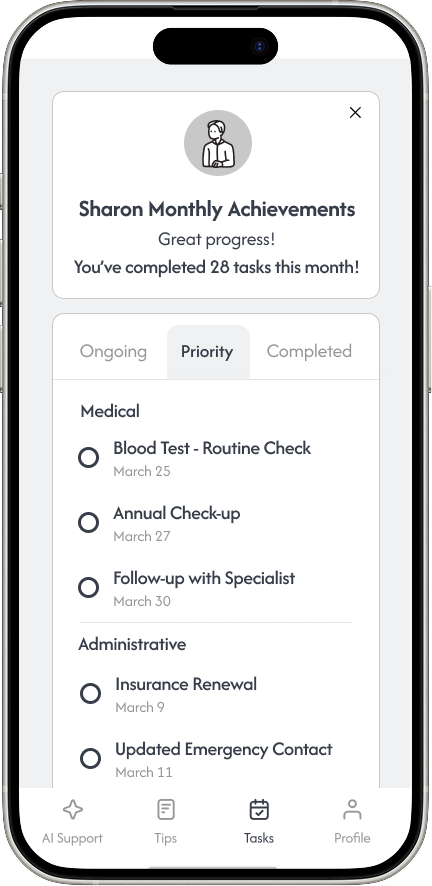
Mobile version, Monthly View: A central screen for urgent, ongoing, and completed tasks.
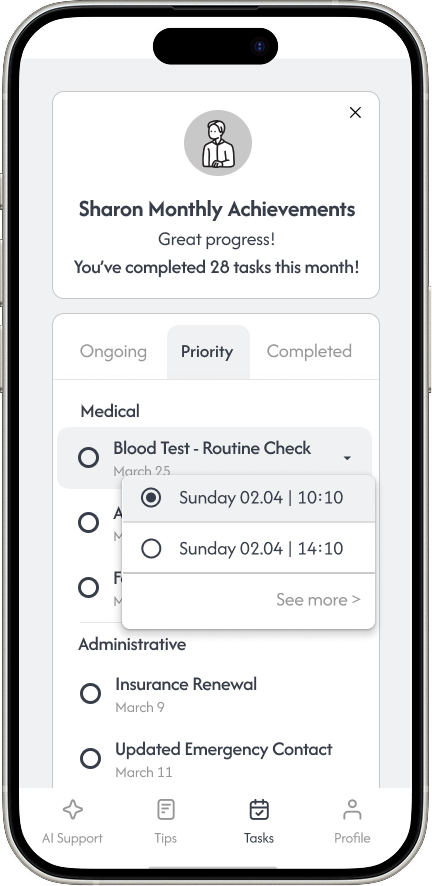
Quick Task Scheduling, Quick Task Scheduling: Tasks scheduled in seconds, with urgent ones on top.
Healthcare System Integration
Connecting The Oak to electronic medical records or discharge summaries could eliminate manual data entry, making onboarding faster and more accurate. This would also enable real-time updates and tighter coordination with healthcare providers.

